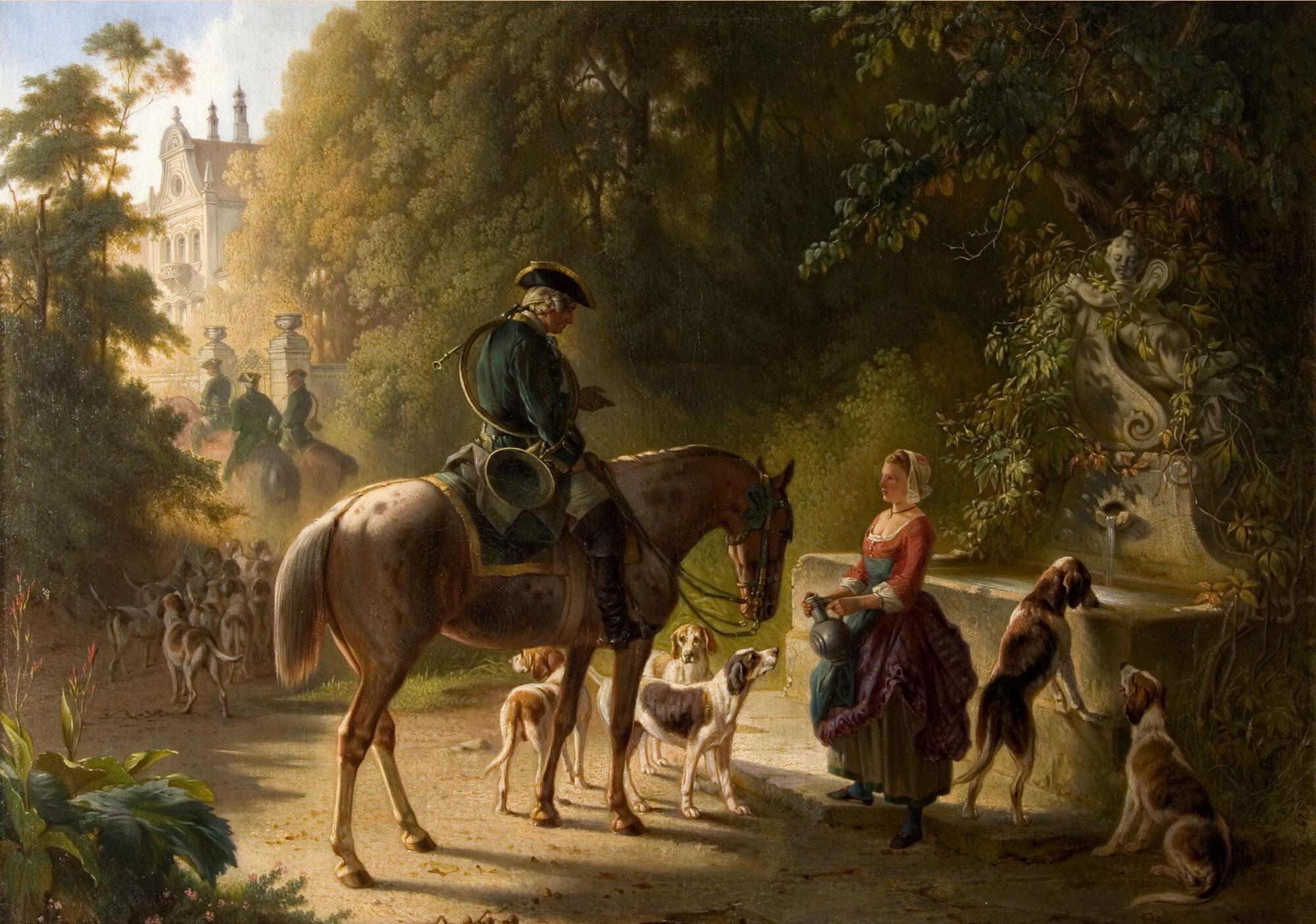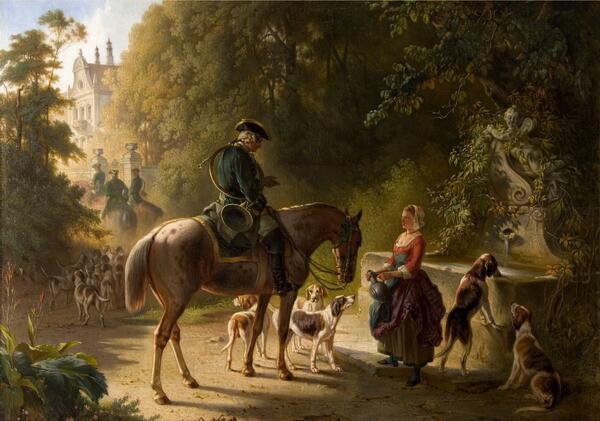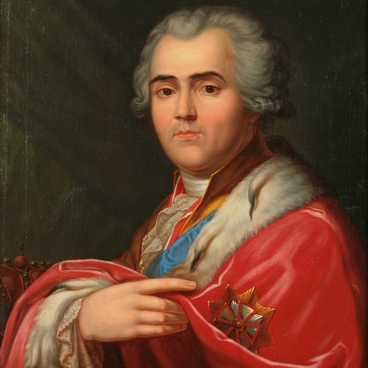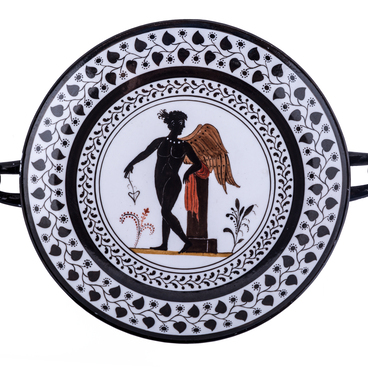The painting “The Return from Chase” by the German animal painter Eugen Adam (1817-1880) entered the Murom Museum in 1946. The legend says that two paintings were discovered by a soldier from Murom during the Great Patriotic War in Sherwood Castle (Hungary). They were rolled up in the attic, and probably would have been destroyed if they hadn’t been transferred to the museum and restored.
The painter came from a family of famous artists. His father Albrecht was among the Bavarian craftsmen in the Napoleon’s army during the campaign in Russia. By the example of his brothers Julius, Franz and Benno, who devoted their lives to art, Eugen also decides to become an artist, and opens his workshop in Munich. A few years later, in 1849, he moved to Milan. Eugen Adam lived and worked there for a long time. In 1859, the painter mastered the profession of a military journalist, and became a correspondent of the magazine “On Land and Sea”. In 1870, when the Franco-Prussian War began, the painter became a soldier of the German army, and later transferred his impressions of battles to his battle canvases.
The painting “The Return from Chase” depicts a young man on a horse, who is met by a sweet girl with a jug in her hands. Chase has long been a popular activity among the European aristocracy. This is a horse hunt with hounds for a fox, deer or hare. The beast was pursuited until the exhausted animal, whacked to the wide, was captured by dogs or killed by a hunter. Weapons were practically not used in chase, since the game was valued, obtained without a single shot. This cruel trade was known to the ancient Gauls, but it reached its peak under the French king Louis XV. By the end of the XIX century, the nature of French chase had changed significantly. Under the influence of England, the game became only an excuse for hunting, and the exercise in jumping with obstacles over unknown terrain came to the fore. This attitude, and also the desire not to waste time searching for animals resulted in the release of animals to the hunting site only a few hours before it. The riders tried to beat off such trophies from the dogs alive in order to save them for a new hunt.
The painter came from a family of famous artists. His father Albrecht was among the Bavarian craftsmen in the Napoleon’s army during the campaign in Russia. By the example of his brothers Julius, Franz and Benno, who devoted their lives to art, Eugen also decides to become an artist, and opens his workshop in Munich. A few years later, in 1849, he moved to Milan. Eugen Adam lived and worked there for a long time. In 1859, the painter mastered the profession of a military journalist, and became a correspondent of the magazine “On Land and Sea”. In 1870, when the Franco-Prussian War began, the painter became a soldier of the German army, and later transferred his impressions of battles to his battle canvases.
The painting “The Return from Chase” depicts a young man on a horse, who is met by a sweet girl with a jug in her hands. Chase has long been a popular activity among the European aristocracy. This is a horse hunt with hounds for a fox, deer or hare. The beast was pursuited until the exhausted animal, whacked to the wide, was captured by dogs or killed by a hunter. Weapons were practically not used in chase, since the game was valued, obtained without a single shot. This cruel trade was known to the ancient Gauls, but it reached its peak under the French king Louis XV. By the end of the XIX century, the nature of French chase had changed significantly. Under the influence of England, the game became only an excuse for hunting, and the exercise in jumping with obstacles over unknown terrain came to the fore. This attitude, and also the desire not to waste time searching for animals resulted in the release of animals to the hunting site only a few hours before it. The riders tried to beat off such trophies from the dogs alive in order to save them for a new hunt.



